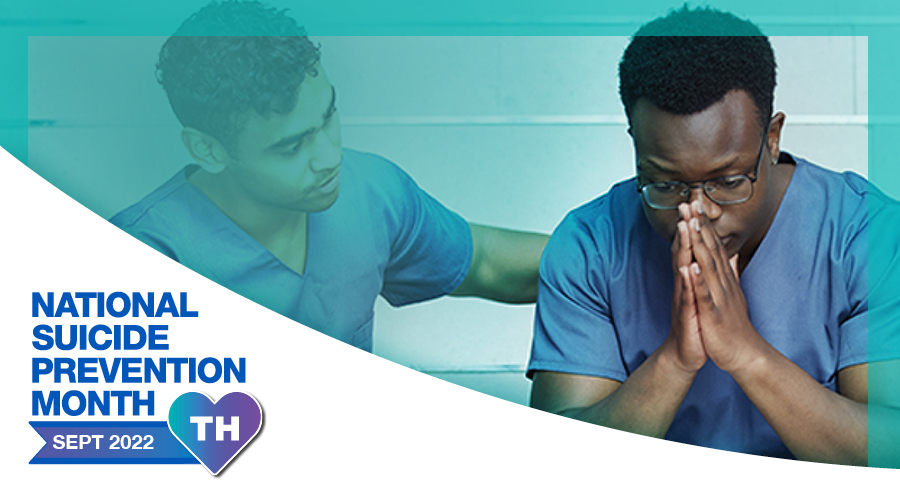By Daniel Sussman, MD, Regional Medical Director, Acute Behavioral Health Services
September is National Suicide Prevention Month, a time to raise awareness and break the stigma around seeking treatment for mental health issues. During this time, the healthcare industry must prioritize suicide prevention and well-being not only for patients, but also for the clinicians who treat them.
Suicide Prevention in Patient Care
Suicide is the 12th leading cause of death in the United States. In 2020, approximately 46,000 Americans died by suicide. The overall numbers are even more striking. According to the CDC, in 2020 an estimated 12.2 million American adults seriously thought about suicide, 3.2 million planned a suicide attempt and 1.2 million adults attempted suicide.
These are extraordinary numbers, and our ability to have an impact requires us to be proactive with patients to find those who are at risk. Whether it be human nature, symptoms of depression/anxiety or just fear, many of our patients, particularly those presenting with medical complaints, don’t want to talk about psychological issues. Unless we ask them, they aren’t going to tell us.
Impact of Suicide on Clinicians
The impact of suicide on healthcare workers is profound. In other specialties, clinicians accept terminal illness exists. However, “terminal depression” can be more difficult to grasp. While many may accept that suicide is an inevitable issue in healthcare, the psychological response is frequently at odds with this knowledge. For most clinicians, there is an automatic assumption that because their patient committed suicide something was done wrong, someone made a mistake or there was a faulty process. Sadness, fear, anger, self-blame/guilt and shame are among the most common actual responses. This cognitive-emotional dissonance creates significant internal stress and can contribute to clinicians being reluctant to discuss the situation freely.
Every suicide of a hospitalized patient triggers a root cause analysis. Yet, these reviews focus on the facts of the case, not on the impact of the suicide on the clinician. For that, more often than not, clinicians are on their own. Compared to other specialties, psychiatry, not surprisingly, is more aware of and more willing to discuss the impact of suicide on clinicians. Other specialties are more likely to take a just the facts approach.
It is clear that healthcare workers share the feelings of shame and self-blame that are commonly seen in families post-suicide. It is also well established that this can contribute to career dissatisfaction and burnout. While the initial impact may well be profound, the legacy of a patient’s suicide can be ameliorated. To minimize clinician burnout from a patient’s suicide, it’s important to encourage discussion, provide support and create a space to acknowledge emotional responses.
Suicide Prevention at TeamHealth
TeamHealth focuses time and resources on clinician well-being, understanding that clinicians must be cared for to deliver vital care to patients. Part of this commitment includes actively providing support, resources and connection to clinicians facing burnout, substance abuse, depression/anxiety and more. Learn more about our clinician well-being commitments.
If you or someone you know is struggling or in crisis, please reach out for help. Reach the 24/7 Suicide & Crisis Lifeline by dialing 988. Access the chat feature (English only): http://988lifeline.org/chat
